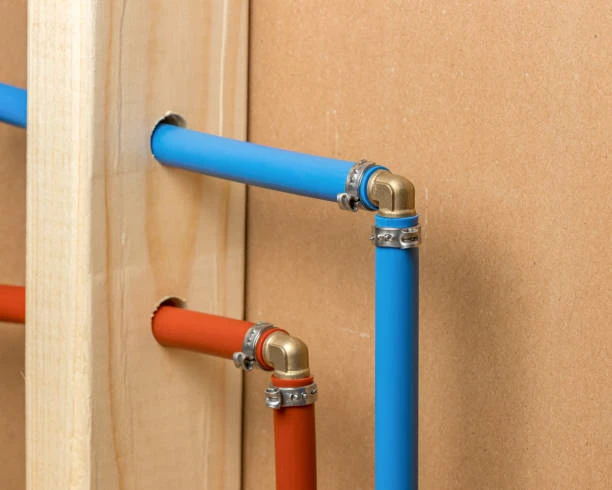Introduction
The plumbing industry has undergone significant changes over the last few decades, with plastic plumbing materials gaining popularity for their durability, cost-effectiveness, and ease of installation. A recent meta-study has brought to light compelling evidence that plastic plumbing can last over 100 years. This revelation has important implications for homeowners, builders, and the environment. In this article, we’ll explore the findings of this meta-study, the benefits of plastic plumbing, and how these materials stack up against traditional plumbing options.
Understanding Plastic Plumbing
What is Plastic Plumbing?
Plastic plumbing encompasses various materials used in the plumbing industry, primarily polyvinyl chloride (PVC), chlorinated polyvinyl chloride (CPVC), and polyethylene (PE). These materials have become integral in residential and commercial plumbing systems, offering an alternative to traditional materials like copper and galvanized steel.
Types of Plastic Plumbing
- PVC (Polyvinyl Chloride): Widely used for drain, waste, and vent systems, PVC is known for its resistance to corrosion and low cost.
- CPVC (Chlorinated Polyvinyl Chloride): Suitable for hot and cold water supply lines, CPVC has a higher temperature tolerance compared to regular PVC.
- PE (Polyethylene): Often used for water service lines and irrigation systems, PE is flexible and resistant to cracking in cold temperatures.

Key Findings of the Meta-Study
Lifespan Evidence
The meta-study compiled data from various studies and real-world observations regarding the lifespan of plastic plumbing materials. Key findings include:
- Longevity Beyond 100 Years: The analysis suggests that under proper installation and maintenance, plastic plumbing systems can effectively last over a century.
- Resistance to Corrosion: Unlike metal pipes, plastic plumbing materials do not corrode or rust, significantly contributing to their extended lifetimes.
- Minimal Maintenance Requirements: Plastic plumbings systems require less maintenance compared to traditional materials, reducing the likelihood of failures over time.
Environmental Impact
The study also highlighted the environmental benefits of using plastic plumbing:
- Reduced Waste: Long-lasting materials contribute to less frequent replacements, minimizing waste in landfills.
- Lower Carbon Footprint: The energy required to produce and transport plastic plumbings is often less than that for metal alternatives, leading to a smaller carbon footprint.
Advantages of Plastic Plumbing
1. Durability
Plastic plumbing materials are resistant to various environmental factors, including:
- Corrosion and Rust: Unlike metal pipes, plastic does not corrode, making it ideal for areas with high moisture levels.
- Chemical Resistance: Many plastic pipes are resistant to chemicals, which makes them suitable for industrial applications as well.
2. Cost-Effectiveness
- Lower Installation Costs: Plastic plumbings is generally easier to install than metal, leading to lower labor costs.
- Reduced Maintenance Costs: The longevity and durability of plastic plumbings mean fewer repairs and replacements over time.
3. Lightweight and Flexible
Plastic plumbing materials are lightweight, making them easier to transport and install. Their flexibility allows for easier maneuvering in tight spaces, reducing installation time and costs.
4. Insulation Properties
Plastic pipes typically have better insulation properties than metal, helping to reduce heat loss in hot water systems and prevent freezing in cold climates.
Challenges and Considerations
1. Temperature Limitations
While plastic plumbings has many advantages, it can be sensitive to extreme temperatures. For example, PVC is not recommended for hot water applications above a certain threshold. Understanding the specifications of each material is crucial.
2. Perception and Acceptance
Despite the compelling evidence of their longevity, some homeowners and builders still favor traditional materials due to preconceived notions about durability and reliability. Education and awareness are necessary to change these perceptions.
3. Environmental Concerns
While plastic has its advantages, concerns about the environmental impact of plastic production and waste remain. Responsible recycling and disposal practices are essential to mitigate these concerns.
Future of Plastic Plumbing
Innovation and Advancements
The plumbing industry continues to innovate, with new technologies and materials emerging. Advances in plastic manufacturing processes can lead to even more durable and environmentally friendly options in the future.
Increased Adoption
As awareness grows about the longevity and benefits of plastic plumbing, more builders and homeowners are likely to adopt these materials. This shift can lead to significant long-term savings and sustainability in plumbing systems.
Conclusion
The findings of the recent meta-study confirm that plastic plumbing materials can last in excess of 100 years, offering significant advantages over traditional plumbing options. With their durability, cost-effectiveness, and minimal maintenance requirements, plastic plumbing systems present a viable solution for modern plumbing needs. As the industry evolves, embracing these materials can lead to a more sustainable future in plumbing.
FAQs
- How long can plastic plumbings last?
- Recent studies indicate that plastic plumbings can last over 100 years when properly installed and maintained.
- What types of plastic plumbings materials are available?
- Common types include PVC, CPVC, and polyethylene, each with specific applications and benefits.
- Is plastic plumbings resistant to corrosion?
- Yes, plastic plumbings materials are resistant to corrosion and rust, making them ideal for various environments.
- Are there any limitations to using plastic plumbings?
- Plastic plumbings can be sensitive to extreme temperatures and may not be suitable for all applications, especially high-temperature water.
- How does plastic plumbings compare to metal options?
- Plastic plumbings is generally lighter, more cost-effective, and resistant to corrosion, making it a preferred choice for many applications.


















